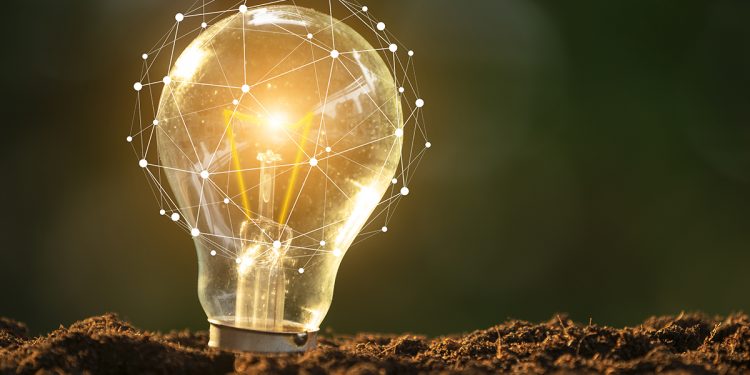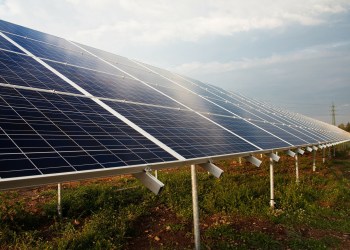WATER E-JOURNAL 2019

Driving innovation by measuring affordability
F Pamminger, P Greenwood, L Morandini, R Sinnott
Measuring affordability can provide a water utility with direct benefits. It can be used to identify and support customers experiencing financial stress and also be a driver for innovation. Affordability is the ratio of cost to disposable income....
Read Full Paper
Community values for green public open space
M van Bueren, R Blamey
With a drying climate, Perth is facing difficult decisions about how to manage green public open space (POS) in the metropolitan area. At present, local councils irrigate POS with groundwater. But this resource is becoming depleted....
Read Full Paper
Energy saving optimisation for water distribution networks
Y Zhao, B Liang, S DangR Taib, Y Wang,F Chen, G Matthews, T Hua,D Vitanage, C Doolan
Pump energy costs can be a major component of total operational expenditure for water utilities and it is a challenge to reduce pump energy costs while ensuring the continuous supply of high-quality water. Data61 and Sydney Water have worked....
Read Full Paper
Forecasting Energy and Carbon Reductions
J Logie,G Fowler, K Lockyer
Sydney Water has assessed sustainability performance for the Lower South Creek Treatment Program (the Project) to gain its first independent Infrastructure Sustainability (IS) Rating...
Read Full Paper
Pumping Sewage Sludge
E Farno, N Eshtiaghi
A large portion of the total energy consumption in any wastewater treatment plant is used for pumping wastewater and sewage within the treatment processes. But the efficient operation of sewage pumps requires an accurate calculation of friction losses...
Read Full Paper
Energy Management at Allwater
J Dreyfus, G Oates
Allwater operates and maintains Adelaide’s water and wastewater systems and has electricity consumption of approximately 93,000 MWh per annum. In 2013, Allwater developed an ISO 50001 certified Energy Management Program to better...
Read Full Paper
Legionella Exposure Risk in Groundwater Treatment Plants
D Yunana, A Branch,K H Tng, I Bradley,L Zappia, P Le-Clech
Aeration systems used in groundwater treatment plants are perceived as a potential source of Legionella exposure, an opportunistic pathogen of significant public health concern. Building on the Legionella High Level Risk Assessment...
Read Full Paper
Realising the Economic Value of Renewable Energy from Biosolids
L Randall, D Derkenne, C Lokuge,N Tawona, P Hillis,G Taylor, D Brauer, P Mukheibir
Biosolids management poses a range of financial, regulatory, environmental and social challenges for wastewater utilities. However, alternative biosolids management approaches can offer opportunities to derive greater environmental and economic value from...
Read Full Paper
Are PFAS an Issue for Permeation of Plastic Water Pipes?
G Ruta,A Jayarantne, A McManemin
Plastic pipes have been used increasingly for conveying drinking water in distribution systems. Factors favouring the use of plastic pipes include their ease of installation and handling, durability and good resistance to the chemicals used in water treatment, such...
Read Full Paper
Planning Urban Water System Responses to Megadrought
D Verdon-Kidd,R Beatty, K Allen
Drought, the ‘creeping catastrophe’, has been a recurrent feature of many parts of southern and eastern Australia over the last three decades. Yet, Australia is no stranger to prolonged drought periods, with the 1930s-40s period and the turn of the 20th century also characterised by widespread drought. Indeed, each drought...
Read Full Paper
Survival Analysis of Water Pipelines
G Carlyle
The large cost of water pipe failures in potable water networks and the need to replace aged water pipes requires water utilities to develop risk-based management plans for the replacement of water mains. Cost benefit analysis requires the development...
Read Full Paper
Baseflow Contribution from Water Sensitive Urban Design
D Buck,B Taylor,L Fabbro, S Rockloff
Urbanisation has altered streamflow and severely degraded our natural aquatic ecosystems. It is vital that we look beyond studies of water quality and hydrogeomorphology and into natural baseflow regimes and whether restoration is possible to within...
Read Full Paper
Machine Learning for Water Mains Maintenance
D Weeraddana,B Liang, Z Li, Y Wang,F Chen, D Phillips, N Saxena, L Bonazzi
Data61 and Western Water worked collaboratively to apply engineering expertise and machine learning tools to find a cost-effective solution to the pipe failure problem in the region west of Melbourne, where on average 400 water...
Read Full Paper
Liveability: Urban Water’s Next Horizon?
H Pexton, K Nagato
The water industry has always been at the forefront of liveability in Melbourne, managing safe water supply and sewage disposal, and as shown today through Melbourne Water’s vision of ‘enhancing life and liveability’ for Greater Melbourne...
Read Full Paper
IoT as a Digital Enabler of a Hyper-Connected Water Utility
C Prackwieser, D Cash, M Wassell
Internet of Things (IoT) provides near-real-time asset monitoring and analytics capabilities which lead to better customer outcomes, higher operational efficiency and improved asset performance. Our pilot project explored potential applications...
Read Full Paper
Determining Safe Drinking Water
T Hasan
The usual indicator utilities use to report drinking water quality compliance is end-point E. coli test results. However, while important, end-point testing has limitations on indicating consistent safety of a supply. It is “too little too late” to provide continuous...
Read Full Paper
Impact of Climate Change on Water Demand
L Uthayakumaran, F Spaninks, A Barker, A Pitman, J Evans
Climate change impacts weather and changes in weather is the single largest factor influencing fluctuations in water demand. Therefore, it would be natural to expect climate change to impact on demand. However, most climate models...
Read Full Paper
Delivering a Sustainable and Climate Resilient Water Future for Bengaluru
G Bhatt, V Singh, V Honnungar, P Ravindra
Bangalore Water Supply and Sewerage Board (BWSSB) is the water utility for Bengaluru – India’s information technology (IT) capital and a megacity with a population of more than 10.5 million – and is responsible for managing the city’s...
Read Full Paper
The Sustainable Development Goals Under Climate Change
Dr S Goldsmith, D Day
Water professionals care deeply about the goals of sustainable development; it is part of our professional DNA. Of the 17 United Nations’ Sustainable Development Goals...
Read Full Paper
Applied Fluvial Geomorphology in the 21st Century
L Smith, P Rogers
In 2016 Melbourne Water embarked on a transformation of how we manage our regions waterways and storm water quality treatment wetlands driven by the Victorian Government mandatory requirement[1] that: commencing...
Read Full Paper
Calculating the Hydraulic Efficiency of a Constructed Wetland
S Harrington
Measurement of the efficiency of constructed wetlands is critical for maintenance of their functions and contribution to improving water quality in urban areas. A fluorescent dye tracer, Rhodamine-WT, was used to track water flow through a stormwater-reliant...
Read Full Paper
Cost-Effective Chlorination Strategies for Drinking Water
I Fisher,G Kastl, A Sathasivan
After outlining three major goals for secondary disinfection, this paper describes a procedure to search for and identify cost-effective chlorination strategies to meet these goals within multiple-source distribution systems. This procedure is based on new, accurate...
Read Full Paper
Water Security Levels of Service
A Killen
In South East Queensland (SEQ), Levels of Service (LOS) objectives have been in use since the Millennium Drought (2001-2009). They are a way of defining the security of supply that the community can expect by finding ...
Read Full Paper
Progressing Reconciliation through Indigenous Partnerships within Australian Water Utilities
M Thomas, D McKinnis, S Brown
This paper explores the deep-time connections that traditional owner nations (the Wadawurrung, Gulidjan, and the Gadabanud) have had with ‘water’ in the Corangamite catchment of Victoria. The first part of the paper describes...
Read Full Paper
Water Supply Energy and Resilience for Whitsunday Water
T James, Y Hughes
Many regional water utilities face significant challenges due to the increasing intensity of tropical cyclones with stronger winds and heavier rainfall ...
Read Full Paper
From tools to toolbox: Sustainability and investment appraisal for water projects
A Reidy
Public infrastructure plays a crucial role in transitioning to a more sustainable society. Many water infrastructure providers have adopted commitments to sustainability practice in corporate plans and statements, and the delivery...
Read Full Paper
Enhancing Water Meter In-Service Testing and Replacement Decisions
EH Johnson
Currently water meter in-service testing and replacement decisions are guided by existing Australian regulations, standards and guidelines. There remains a need for additional methods/techniques to enhance this decision-making process and to quantify...
Read Full Paper
Smart Water Metering Technology for Water Management in Urban Areas
T Randall, R Koech
Water meters are used for urban water management, especially for billing purposes. The relatively recent Smart Water Metering (SWM) technology provides high resolution and frequent water consumption data which can be used...
Read Full Paper